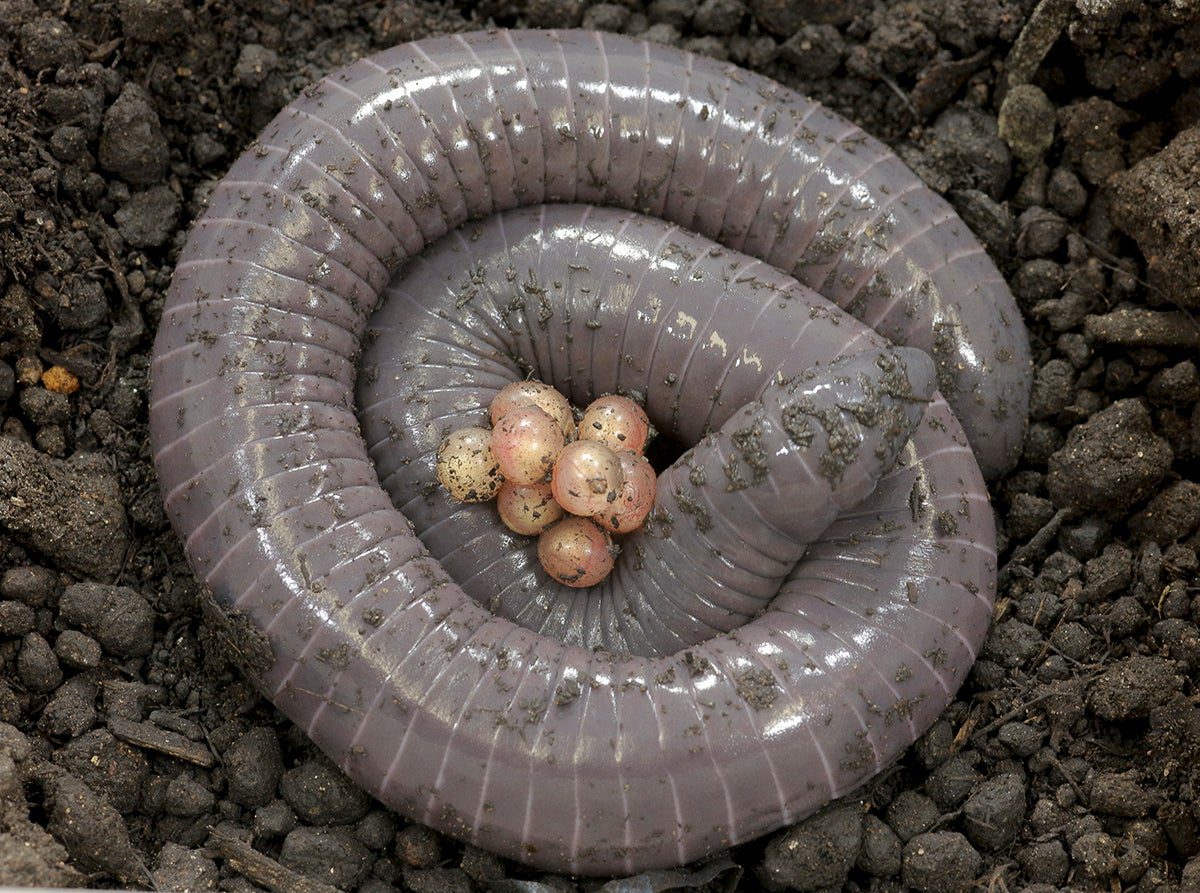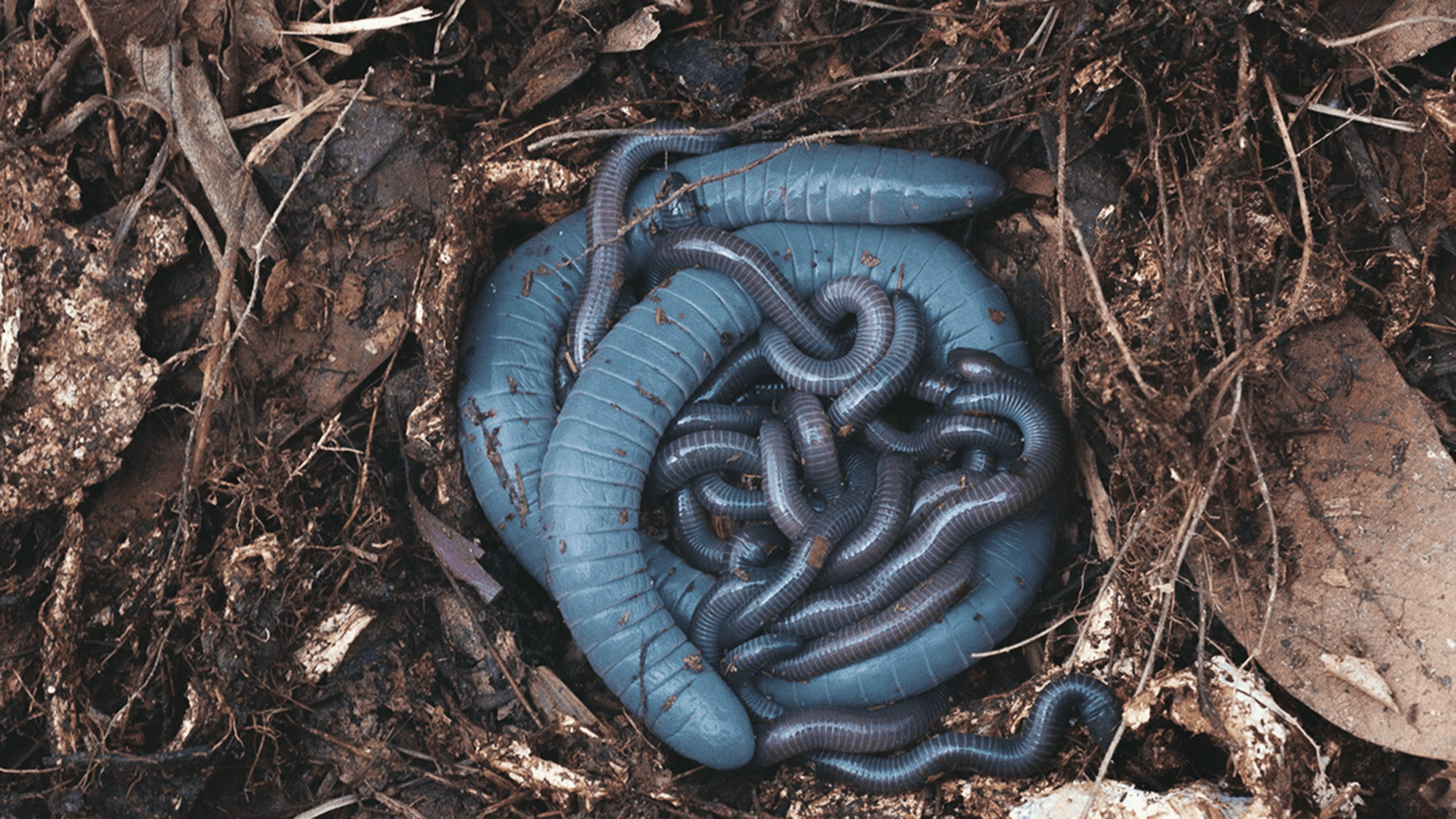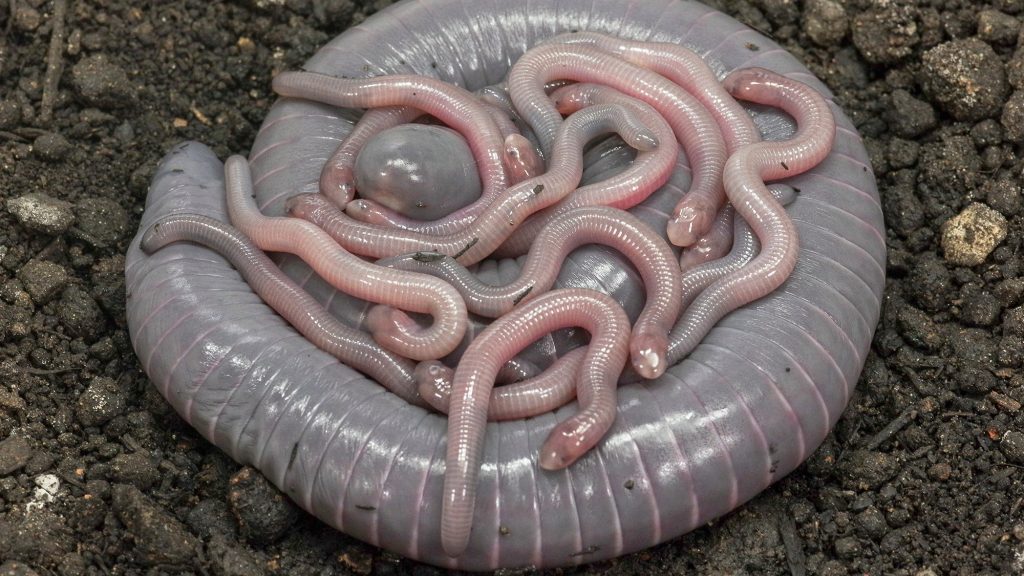Alternatives to cow’s milk keep popping up. There’s oat milk, there’s goat’s milk, and now there’s amphibian milk (though you won’t find it on grocery store shelves). A team of Brazilian biologists have documented legless, subterranean amphibian mothers producing a milk-like liquid– packed with fats and carbohydrates–for their offspring. The research published March 7 in the journal Science is the first known instance of an egg-laying amphibian provisioning its babies with “milk.” The findings unveil new bodily functions and possible complex communication in an understudied animal weirdo.
Non-dairy discovery
Generally, milk is associated with mammals. After all, the word ‘mammal’ comes from the Latin mamma for “breast,” a reference to our taxonomic classes’ milk-producing mammary glands. But mammals are not the only group of animals to feed their babies with specialized secretions. Pigeons, penguins, and flamingos have “crop milk”–a goopy substance made by bird parents of both sexes within the lining of their digestive tracts. Some spiders and cockroaches, too, produce milk for their many-legged young. Enter caecilians, wormlike relatives of frogs, toads, and salamanders that live primarily in tropical areas.

Ringed caecilians (Siphonops annulatus) are one of about 220 known caecilian species worldwide, and are the newest addition to the list of milk-able animals. The odd, nearly-blind organisms live secretive lives under the soil and leaf litter of South American forests and grasslands. “They are one of the least-well understood vertebrates, because access to these animals is very difficult,” says Carlos Jared, senior study author and an integrative biologist at the Butantan Institute in São Paulo, Brazil. But the effort is worth it, he adds because caecilians are a “surprise box,” constantly offering up unexpected biological treats.
Through years of careful study, collection, and observation in the wild and the lab, Jared and his colleagues have overcome the unknown to make some remarkable discoveries about S. annulatus. Most recently, they’ve learned that the amphibians provision their young with a viscous clear liquid “the consistency of honey,” says Jared. Ringed caecilians secrete this nutritious milk from their “vents”–the all-purpose opening at the rear-end of the body where waste and eggs are also released. In other words: these vertebrate worms feed their offspring with milk from their butts.
“It’s an exciting discovery of incredibly interesting reproductive modifications,” says Marvalee Wake, an integrative biologist at the University of California, Berkeley. Wake was not involved in the new study but has studied caecilians extensively and penned a perspective article accompanying the research in Science. The finding “challenges existing understanding of the evolution of parental care,” she writes in that note.
Dedicated parents
Some caecilians give live birth, but ringed caecilians lay eggs. Mothers guard their broods closely. Even after the young hatch and emerge as tiny, slimy wrigglers, mom continues to invest about two months in parental care, forsaking food to ensure the babies are well-fed. Previous research by Jared and others has documented some of the ringed caecilians’ unorthodox parenting methods. While raising offspring, the amphibian mothers’ skin changes color, developing a fatty outer-layer. The offspring use special teeth to scrape it off as a meal.
(“It doesn’t cause any harm to the mother,” clarifies Marta Antoniazzi, a co-author on both the new study and prior skin-feeding work, and a researcher at the Butantan Institute.) But with the new research, it’s clear that caecilians have more than just skin in the game–they’re producing an additional, energetically costly food source. Females lose an average of 30% of their body weight in providing for their young, according to the study.
Following up on past observations that caecilian broods spend a lot of time around the maternal vent, Jared, Antoniazzi, and their co-researchers collected 16 female caecilians and their young from beneath the forest floor of cacao plantations. Digging up the study subjects was “difficult” and required “great patience,” says Jared. In the lab, they housed the animals in tanks designed to mimic their natural environment, and set up cameras to record S. annulatus’ parental care. They confirmed that hatchlings ingest a secretion from their mother’s vent, and that such feedings occur multiple times a day–much more frequently than the weekly skin feedings. After each milk session, the young become less active and laze around “with bellies facing up, demonstrating apparent satiety,” according to the study.
Milk provisioning in the caecilian Siphonops annulatus. Speed was raised 600X. Credit: Mailho-Fontana et al.
Through analyzing thin layers of tissue from different organs, the biologists found that the milk is produced by special glands that appear only during the parental care period. These temporary glands form in the skin of the caecilians’ oviducts–the equivalent of a mammalian fallopian tube.
It’s been known for decades that some live-bearing caecilian species produce a secretion in their oviducts to nourish their young internally, thanks to earlier research from Wake. But for an egg-laying species to do a similar thing is startling. “The dogma, based on all known similar species, is that even when an egg-laying mom provides some care or stays with the young for a time, there isn’t any such provisioning,” says Wake. “Switching to something that live-bearers do is really novel,” she adds.
More surprises
To assess S. annulatus’ milk composition, the scientists extracted the liquid from five of the caecilian mothers with careful massages and the help of gravity, according to Pedro Mailho-Fontana, lead study author and another researcher at Butantan Institute. Multiple analyses revealed the presence of carbohydrates and fat. (Though ringed caecilian milk lacks protein, the maternal skin fills that nutritional gap, says Antoniazzi.) Two types of fatty acids, palmitic and stearic acid, make up more than 90% of the caecilian milk-fat total, per the study. Three of the major fatty acids detected in the amphibian milk are also a significant part of the make-up of cow’s milk.
Then, the cameras captured yet another surprise. Hatchlings make clicking noises and wriggling movements near the vent in the lead-up to milk feedings, says Mailho-Fontana. He and his colleagues found that these sounds and movements peak in frequency just before milk is released, suggesting the offspring are begging and the mother is responding. “Most amphibian biologists are pretty conservative about claiming communication, but it’s entirely plausible based on the recordings that this team has,” says Wake. This type of vocal food solicitation would be unique among amphibians, she notes–just another way these bizarre animals set themselves apart.

What lies ahead
The study scientists are hoping to conduct follow-up research further examining the offspring vocalizations. Wake would like to see additional work assessing the hormonal cues that prepare a caecilian mother for parental care. “We have many other things to discover in these animals,” says Jared. Even with this new set of findings, so much remains unknown. Perhaps, as Jared suggests, the burrowing amphibians could play a critical role as soil engineers–helping plants grow. Maybe we have caecilians to thank for our chocolate bars, as they dig their way through cacao plantations.
That scientists are still discovering such basic things about vertebrate biology proves, “we need to know more about the biology of all the species on the planet,” says Wake. “Facing climate change and habitat modification, we need to know what we’re doing to our ecosystems–our support base.” Ringed caecilians put tons of effort into supporting their young, and in the process, they’re an inevitable part of the delicate web that supports us all.









